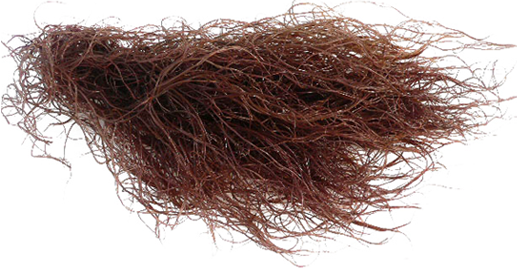
Black Soldier Flies Go Well with Red Seaweed
At least for tilapia. As search for materials that can replace fish meal in commercial aquafeeds continues, a recent study indicates that red seaweed in combination with insect meal can be used for its partial substitution in tilapia feed. Of course, tilapia seems to eat pretty much everything. However, it is still good news.
Muin, H., Taufek, N.M., Alias, Z. and Nor, A.M., 2023. Supplementation of red seaweed (Gracilaria changii) in black soldier fly (Hermetia illucens) larvae-based diet for red hybrid tilapia: Effects on growth performance, fillet quality, sensory analysis, haematological indices, and antioxidant enzyme activities. Journal of Applied Phycology, https://doi.org/10.1007/s10811-023-03041-9
Black soldier fly larvae (BSFL) can be used to replace fishmeal (FM) up to 50% in tilapia diets without affecting their growth according to our previous study. Hence, this study was conducted to improve the formulation by supplementing red seaweed, Gracilaria changii meal, at a different percentage to reduce the FM percentage in the red hybrid tilapia diet. All diets were based on 30% protein (isonitrogenous), 10% lipid (isolipidic) and 19 kJ g−1 energy (isoenergetic) contents. The first group was fed with BSFL and FM at a 1:1 (15%: 15%) ratio as Control. Another four groups were provided with 15% BSFL and graded dosage replacement of FM with G. changi at 4.5% (GC4.5), 7.5% (GC7.5), 10.5% (GC10.5), and 15% (GC15). Each diet was randomly assigned to a triplicate tank with 20 fish per tank (mean weight ± 10 g). From the result, the weight gain, feed intake, FCR, SGR and PER of fish fed with GC7.5 were comparable to the control diet. The result of organosomatic indices shows that supplementation of G. changii did not significantly affect the hepatosomatic index (HSI) value but significantly improved the condition factor value at GC7.5. In addition, the inclusion of G. changi in feed resulted in higher protein and lipid body composition than the control diets. The values for all haematological parameters were within the normal range of healthy tilapia, which indicates that the supplementation of G. changi meal at different levels had no adverse effect on the tilapia blood profile. No significant difference (P > 0.05) was observed in fish's antioxidant enzyme activities, including superoxide dismutase, glutathione S-transferase and catalase. However, for the sensory analysis parameter, the panellist significantly prefered the GC15 fish fillet over other experimental diets based on flavour and overall acceptability. Therefore, the G. changii supplementation, at a level of 7.5% in a diet containing 15% BSFL, is more effective in the red hybrid tilapia diet.
